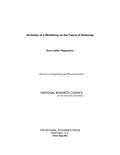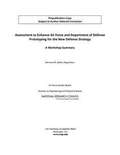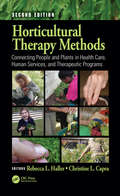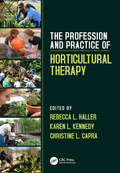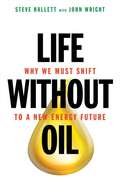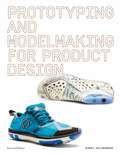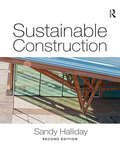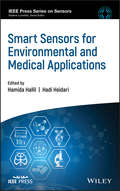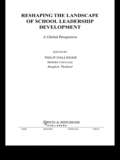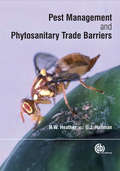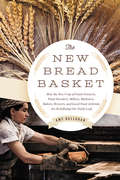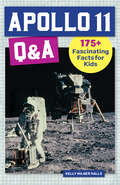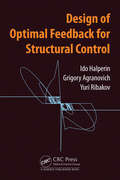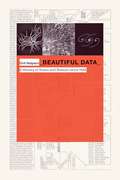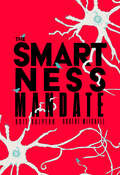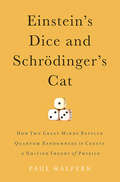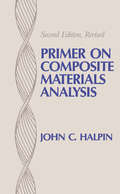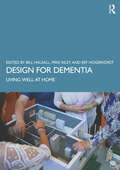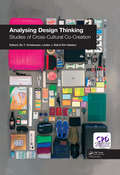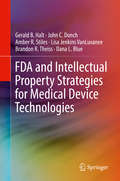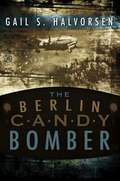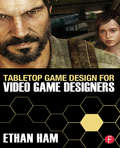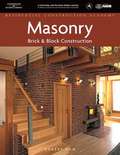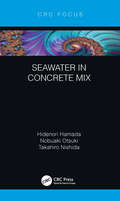- Table View
- List View
Summary of a Workshop on the Future of Antennas
by Norm HallerThe Workshop on the Future of Antennas was the second of three workshops conducted by the National Research Council's Committee for Science and Technology Challenges to U. S. National Security Interests. The objectives of the workshop were to review trends in advanced antenna research and design, review trends in commercials and military use of advanced antennas that enable improved communication, data transfer, soldier health monitoring, and other overt and covert methods of standoff data collection. The first day's sessions, consisting of five presentations and discussions on antennas and wireless communications and control, were open to committee members, staff, guests, and members of the public. The second day was a data-gathering session addressing vulnerabilities, indicators, and observables; presentations and discussions during this session included classified material and were not open to the public. The committee's role was limited to planning and convening the workshop. This report is organized by topic in the order of presentation and discussion at the workshop. For Day 1 the topics were Future of Antennas, Commercial State of the Art of Wireless Communications and Control, Military State of the Art of Wireless Communications and Control, and Future Trends in Antenna Design and Wireless Communications and Control. For Day 2 the topics were Vulnerabilities of Ubiquitous Antennas, and Indicators and Observables, followed by a wrap-up discussion. Summary of a Workshop on the Future of Antennasdescribes what happened at the workshop.
Assessment to Enhance Air Force and Department of Defense Prototyping for the New Defense Strategy
by Norman M. Haller Planning Committee for a Workshop on Assessment to Enhance Air Force and Department of Defense Prototyping for the New Defense Strategy Air Force Studies Board National Research Council Division on Engineering and Physical SciencesAssessment to Enhance Air Force and Department of Defense Prototyping for the New Defense Strategy is the summary of a workshop convened by the Air Force Studies Board of the National Academies' National Research Council in September 2013 to enhance Air Force and Department of Defense (DoD) prototyping for the new defense strategy. This workshop examined of a wide range of prototyping issues, including individual recommendations for a renewed prototype program, application of prototyping as a tool for technology/system development and sustainment (including annual funding), and positive and negative effects of a renewed program. Prototyping has historically been of great benefit to the Air Force and DoD in terms of risk reduction and concept demonstration prior to system development, advancing new technologies, workforce enhancement and skills continuity between major acquisitions, dissuasion of adversaries by demonstrating capabilities, maintaining technological surprise through classified technologies, and an overarching strategy of overall risk reduction during austere budget environments. Over the last two decades, however, many issues with prototyping have arisen. For example, the definitions and terminology associated with prototyping have been convoluted and budgets for prototyping have been used as offsets to remedy budget shortfalls. Additionally, prototyping has been done with no strategic intent or context, and both government and industry have misused prototyping as a key tool in the DoD and defense industrial base. Assessment to Enhance Air Force and Department of Defense Prototyping for the New Defense Strategy envisions a prototyping program that encourages innovation in new concepts and approaches and provides a means to assess and reduce risk before commitment to major new programs.
Horticultural Therapy Methods: Connecting People and Plants in Health Care, Human Services, and Therapeutic Programs, Second Edition
by Rebecca L. Haller Christine L. CapraHorticultural therapy has evolved from its use only by volunteer gardeners to become a recognized and respected therapeutic modality conducted by trained, registered professionals. Horticultural Therapy Methods is the first textbook to describe the processes and techniques used to provide horticultural therapy interventions and the rationale for their use. This book presents types of programs, settings, and goals in horticultural therapy. It outlines treatment planning; development of sessions to meet treatment objectives; motivation and behavior management techniques; documentation guidelines; practical approaches for wellness; and resources for activity ideas. New to this Edition: Various useful examples of horticultural therapy in practice and strategically placed tips and resources. Additions to appendix on horticultural therapy treatment strategies. New chapter on session planning. Thirty-seven photographs demonstrating horticultural therapy in practice. Additional "HT Practice" examples and tips. The book is used as a reference and a guide for students, educators, and those conducting horticultural therapy or therapeutic horticulture to guide them in constructing effective treatment programs. Health care and human service professionals use the reference in the therapy, treatment, and education of inmates, residents, patients, trainees, students, and other participants.
The Profession and Practice of Horticultural Therapy
by Rebecca L. Haller Karen L. Kennedy Christine L. CapraThe Profession and Practice of Horticultural Therapy is a comprehensive guide to the theories that horticultural therapists use as a foundation for their practice and provides wide-ranging illustrative models of programming. This book aims to enhance understanding and provide insight into the profession for both new and experienced practitioners. It is directed to students in the field, along with health care and human service professionals, to successfully develop and manage horticultural therapy programming. The book is organized into four sections: an overview of the horticultural therapy profession, theories supporting horticultural therapy use, models for programs, and tools for the therapist. Areas of focus include: Overview of the profession, including the knowledge, skills, and abilities needed to practice Discussion of related people-plant endeavors and theories supporting horticultural therapy Issues within the profession of horticultural therapy, including employment models, professionalism and ethics, and credentials Characteristics and implementation of therapeutic, vocational, and wellness program models Accommodations and adaptive techniques to best serve the needs of all participants Strategies for assessment and documentation for horticultural therapy intervention Issues for managing programs including how horticultural therapy programs collaborate with other disciplines, determining program costs and budget, managing staff and growing spaces, and conducting program evaluations Horticultural therapy serves the needs of the whole individual when practitioners have a broad and deep comprehension of the theories, techniques, and strategies for effective program development and management. The Profession and Practice of Horticultural Therapy provides relevant and current information on the field with the intent to inspire best practices and creative, effective programs.
Life Without Oil: Why We Must Shift to a New Energy Future
by Steve Hallett John WrightHallett (botany and plant pathology, Purdue U. ), who is joined by John Wright, an energy and environmental journalist, contends that oil and natural gas supplies will wane by the end of the century and that society has failed to see this problem and act on it. He describes the history of the world in terms of energy use, how the petroleum interval of the last century fits into larger civilization, and how the rise of civilizations has been a story of human access to increasingly powerful sources of energy and that problems with access to energy have led to societal collapse. He examines problems that are likely to occur in different countries over the next half century, effects on the global economy, and what can be done about them it by considering nuclear power, reconnecting communities, focusing on sustainable agriculture, and recognizing that the laws of ecology override the economy. Annotation ©2011 Book News, Inc., Portland, OR (booknews.com)
Prototyping and Modelmaking for Product Design: Second Edition
by Bjarki HallgrimssonNow in its second edition, Prototyping and Modelmaking for Product Design, by practising product development consultant Bjarki Hallgrimsson, is essential reading for both students and design professionals.Prototyping and ModelMaking for Product Design goes behind the scenes to illustrates how prototypes are used to help designers understand problems better, explore more imaginative solutions, investigate human interaction more fully and test functionality so as to de-risk the design process. Following an introduction on the purpose of prototyping, specific materials, tools and techniques are examined in detail, with step-by-step tutorials and industry examples of real and successful products illustrating how prototypes are used to help solve design problems. Workflow is also discussed, using a mixture of hands-on and digital tools.This new edition includes case studies representing technological developments such as prototyping user experience and interactive electronic products, as well as a new expanded section on digital modelmaking tools, including 3D printing and laser cutting.The first chapters of the book explain why prototyping is so important to the design process. The many uses of prototyping will be shown in the context of several comprehensive projects by some of the world's leading design firms.The second part is an introduction to the typical materials used by designers in their prototyping efforts and how to work with them. In all cases, the approach is to use digital and manual tools in a complementary and effective fashion. Tutorials were specifically developed that underline the back and forth of digital and manual ways of working. The emphasis is on the kinds of construction that can be done by the designers themselves. Health and safety is stressed in terms of personal responsibility and awareness.Topics covered include:Definition of prototyping and modelmakingPrototyping as a form of problem solvingModelmakingPhysical and digital prototypesBuidling by hand and using digital technologies
Prototyping and Modelmaking for Product Design: Second Edition
by Bjarki HallgrimssonNow in its second edition, Prototyping and Modelmaking for Product Design, by practising product development consultant Bjarki Hallgrimsson, is essential reading for both students and design professionals.Prototyping and ModelMaking for Product Design goes behind the scenes to illustrates how prototypes are used to help designers understand problems better, explore more imaginative solutions, investigate human interaction more fully and test functionality so as to de-risk the design process. Following an introduction on the purpose of prototyping, specific materials, tools and techniques are examined in detail, with step-by-step tutorials and industry examples of real and successful products illustrating how prototypes are used to help solve design problems. Workflow is also discussed, using a mixture of hands-on and digital tools.This new edition includes case studies representing technological developments such as prototyping user experience and interactive electronic products, as well as a new expanded section on digital modelmaking tools, including 3D printing and laser cutting.The first chapters of the book explain why prototyping is so important to the design process. The many uses of prototyping will be shown in the context of several comprehensive projects by some of the world's leading design firms.The second part is an introduction to the typical materials used by designers in their prototyping efforts and how to work with them. In all cases, the approach is to use digital and manual tools in a complementary and effective fashion. Tutorials were specifically developed that underline the back and forth of digital and manual ways of working. The emphasis is on the kinds of construction that can be done by the designers themselves. Health and safety is stressed in terms of personal responsibility and awareness.Topics covered include:Definition of prototyping and modelmakingPrototyping as a form of problem solvingModelmakingPhysical and digital prototypesBuidling by hand and using digital technologies
Sustainable Construction
by Sandy HallidayThe second edition of Sustainable Construction provides a masterclass on the principles and techniques involved in the design and delivery of practical, affordable, high quality sustainable buildings and places. It presents precedents, theory, concepts and principles alongside 120 wide ranging case studies that highlight current best practice and encourage implementation. Topics in the book include: • the history of ideas in sustainable construction • policy • materials • cost issues • appraisal techniques • environmental design • energy • water • construction processes • and urban ecology. The book is heavily illustrated in full colour and is an ideal, contemporary, accessible primer to courses in Architecture, Construction, Building Engineering, Environmental Engineering, Project Management, Landscape, Urbanism and Development.
Smart Sensors for Environmental and Medical Applications (IEEE Press Series on Sensors)
by Hamida Hallil Hadi HeidariProvides an introduction to the topic of smart chemical sensors, along with an overview of the state of the art based on potential applications This book presents a comprehensive overview of chemical sensors, ranging from the choice of material to sensor validation, modeling, simulation, and manufacturing. It discusses the process of data collection by intelligent techniques such as deep learning, multivariate analysis, and others. It also incorporates different types of smart chemical sensors and discusses each under a common set of sub-sections so that readers can fully understand the advantages and disadvantages of the relevant transducers—depending on the design, transduction mode, and final applications. Smart Sensors for Environmental and Medical Applications covers all major aspects of the field of smart chemical sensors, including working principle and related theory, sensor materials, classification of respective transducer type, relevant fabrication processes, methods for data analysis, and suitable applications. Chapters address field effect transistors technologies for biological and chemical sensors, mammalian cell–based electrochemical sensors for label-free monitoring of analytes, electronic tongues, chemical sensors based on metal oxides, metal oxide (MOX) gas sensor electronic interfaces, and more. Addressing the limitations and challenges in obtaining state-of-the-art smart biochemical sensors, this book: Balances the fundamentals of sensor design, fabrication, characterization, and analysis with advanced methods Categorizes sensors into sub-types and describes their working, focusing on prominent applications Describes instrumentation and IoT networking methods of chemical transducers that can be used for inexpensive, accurate detection in commercialized smart chemical sensors Covers monitoring of food spoilage using polydiacetylene- and liposome-based sensors; smart and intelligent E-nose for sensitive and selective chemical sensing applications; odor sensing system; and microwave chemical sensors Smart Sensors for Environmental and Medical Applications is an important book for senior-level undergraduate and graduate students learning about this high-performance technology and its many applications. It will also inform practitioners and researchers involved in the creation and use of smart sensors.
Reshaping the Landscape of School Leadership Development: A Global Perspective (Contexts Of Learning Ser.)
by Philip HallingerReshaping the Landscape of School Leadership Development: A Global Perspective traces developments in this arena as they evolved since 1980. The book is comprised of chapters authored by the leading scholars in the fields of educational leadership and school leadership development from the United States, Canada, Europe, Asia, and Australia. The vol
Pest Management and Phytosanitary Trade Barriers
by Guy J. Hallman Neil W. HeatherA significant amount of the world's economy is based upon the international trade of agricultural produce. For the producing countries, a growing concern is the potential economic and ecological damage that invasive species could cause. While threats can be decreased through the regulation of items potentially carrying invasive species, the effect of such restrictions on international trade also needs to be considered. A balance must therefore be met that permits the transfer of produce while filtering out unwanted pests. Drawing on the author's extensive experience, the social and financial implications of phytosanitary trade barriers are reviewed. This book offers valuable and comprehensive coverage of pest related barriers and strategies for their implementation.
The New Bread Basket
by Amy HalloranFor more than 10,000 years, grains have been the staples of Western civilization. The stored energy of grain allowed our ancestors to shift from nomadic hunting and gathering and build settled communities—even great cities. Though most bread now comes from factory bakeries, the symbolism of wheat and bread—amber waves of grain, the staff of life—still carries great meaning. Today, bread and beer are once again building community as a new band of farmers, bakers, millers, and maltsters work to reinvent local grain systems. The New Bread Basket tells their stories and reveals the village that stands behind every loaf and every pint. While eating locally grown crops like heirloom tomatoes has become almost a cliché, grains are late in arriving to local tables, because growing them requires a lot of land and equipment. Milling, malting, and marketing take both tools and cooperation. The New Bread Basket reveals the bones of that cooperation, profiling the seed breeders, agronomists, and grassroots food activists who are collaborating with farmers, millers, bakers, and other local producers. Take Andrea and Christian Stanley, a couple who taught themselves the craft of malting and opened the first malthouse in New England in one hundred years. Outside Ithaca, New York, bread from a farmer-miller-baker partnership has become an emblem in the battle against shale gas fracking. And in the Pacific Northwest, people are shifting grain markets from commodity exports to regional feed, food, and alcohol production. Such pioneering grain projects give consumers an alternative to industrial bread and beer, and return their production to a scale that respects people, local communities, and the health of the environment. Many Americans today avoid gluten and carbohydrates. Yet, our shared history with grains—from the village baker to Wonder Bread—suggests that modern changes in farming and processing could be the real reason that grains have become suspect in popular nutrition. The people profiled in The New Bread Basket are returning to traditional methods like long sourdough fermentations that might address the dietary ills attributed to wheat. Their work and lives make our foundational crops visible, and vital, again.
Apollo 11 Q&A: 175+ Fascinating Facts for Kids (History Q&A)
by Kelly Milner Halls175+ fascinating facts that teach kids ages 8 to 12 how we got to the moon From cube-shaped astronaut foods to the famous moon walk, there are so many incredible things for kids to learn about the Apollo 11 mission. This engaging guide introduces kids to the legacy of Apollo 11 through short, fun Q&As. They'll see how awesome learning can be as they read about spaceships, astronauts, space suits, and more—one easy-to-understand answer at a time. Go beyond other Apollo 11 books for kids with: New ways to learn—Launch kids into the history of the Apollo 11 mission with Q&As, true or false questions, and fun facts. Shareable history—This book is packed full of bite-sized bits of history that are both memorable and exciting for kids to tell their friends and family. A complete overview—From the start of the space race to the ways the Apollo 11 mission still affects modern space travel, kids will get a comprehensive look at America's space program. Spark a lifelong love of history in young astronauts with this top choice in space books for kids.
Design of Optimal Feedback for Structural Control
by Ido Halperin Grigory Agranovich Yuri RibakovStructural control is an approach aimed at the suppressing unwanted dynamic phenomena in civil structures. It proposes the use of methods and tools from control theory for the analysis and manipulation of a structure’s dynamic behavior, with emphasis on suppression of seismic and wind responses. This book addresses problems in optimal structural control. Its goal is to provide solutions and techniques for these problems by using optimal control theory. Thus, it deals with the solution of optimal control design problems related to passive and semi-active controlled structures. The formulated problems consider constraints and excitations which are common in structural control. Optimal control theory is used in order to solve these problems in a rigorous manner. Even though there are many works in this field, none comprise optimization techniques with firm theoretical background that address the solution of passive and semi-active structural control design problems. The book begins with a discussion on models which are commonly used for civil structures and control actuators. Modern theoretical notions, such as dissipativity and passivity of dynamic systems are discussed in context of the addressed problems. Optimal control theory and suitable successive methods are reviewed. Novel solutions for optimal passive and semi-active control design problems are derived, based on firm theoretical foundations. These results are verified by numerical simulations of typical civil structures which are subjected to different types of dynamic excitations.
Beautiful Data: A History of Vision and Reason since 1945
by Orit HalpernBeautiful Data is both a history of big data and interactivity, and a sophisticated meditation on ideas about vision and cognition in the second half of the twentieth century. Contending that our forms of attention, observation, and truth are contingent and contested, Orit Halpern historicizes the ways that we are trained, and train ourselves, to observe and analyze the world. Tracing the postwar impact of cybernetics and the communication sciences on the social and human sciences, design, arts, and urban planning, she finds a radical shift in attitudes toward recording and displaying information. These changed attitudes produced what she calls communicative objectivity: new forms of observation, rationality, and economy based on the management and analysis of data. Halpern complicates assumptions about the value of data and visualization, arguing that changes in how we manage and train perception, and define reason and intelligence, are also transformations in governmentality. She also challenges the paradoxical belief that we are experiencing a crisis of attention caused by digital media, a crisis that can be resolved only through intensified media consumption.
The Smartness Mandate
by Orit Halpern Robert MitchellOver the last half century, "smartness"—the drive for ubiquitous computing—has become a mandate: a new mode of managing and governing politics, economics, and the environment.Smart phones. Smart cars. Smart homes. Smart cities. The imperative to make our world ever smarter in the face of increasingly complex challenges raises several questions: What is this "smartness mandate"? How has it emerged, and what does it say about our evolving way of understanding—and managing—reality? How have we come to see the planet and its denizens first and foremost as data-collecting instruments?In The Smartness Mandate, Orit Halpern and Robert Mitchell radically suggest that "smartness" is not primarily a technology, but rather an epistemology. Through this lens, they offer a critical exploration of the practices, technologies, and subjects that such an understanding relies upon—above all, artificial intelligence and machine learning. The authors approach these not simply as techniques for solving problems of calculations, but rather as modes of managing life (human and other) in terms of neo-Darwinian evolution, distributed intelligences, and "resilience," all of which have serious implications for society, politics, and the environment.The smartness mandate constitutes a new form of planetary governance, and Halpern and Mitchell aim to map the logic of this seemingly inexorable and now naturalized demand to compute, to illuminate the genealogy of how we arrived here and to point to alternative imaginaries of the possibilities and potentials of smart technologies and infrastructures.
Einstein's Dice and Schrödinger's Cat: How Two Great Minds Battled Quantum Randomness to Create a Unified Theory of Physics
by Paul HalpernWhen the fuzzy indeterminacy of quantum mechanics overthrew the orderly world of Isaac Newton, Albert Einstein and Erwin Schrödinger were at the forefront of the revolution. Neither man was ever satisfied with the standard interpretation of quantum mechanics, however, and both rebelled against what they considered the most preposterous aspect of quantum mechanics: its randomness. Einstein famously quipped that God does not play dice with the universe, and Schrödinger constructed his famous fable of a cat that was neither alive nor dead not to explain quantum mechanics but to highlight the apparent absurdity of a theory gone wrong. But these two giants did more than just criticize: they fought back, seeking a Theory of Everything that would make the universe seem sensible again. In Einstein’s Dice and Schrödinger’s Cat, physicist Paul Halpern tells the little-known story of how Einstein and Schrödinger searched, first as collaborators and then as competitors, for a theory that transcended quantum weirdness. This story of their quest--which ultimately failed--provides readers with new insights into the history of physics and the lives and work of two scientists whose obsessions drove its progress. Today, much of modern physics remains focused on the search for a Theory of Everything. As Halpern explains, the recent discovery of the Higgs Boson makes the Standard Model--the closest thing we have to a unified theory-- nearly complete. And while Einstein and Schrödinger failed in their attempt to explain everything in the cosmos through pure geometry, the development of string theory has, in its own quantum way, brought this idea back into vogue. As in so many things, even when they were wrong, Einstein and Schrödinger couldn’t help but get a great deal right.
Primer on Composite Materials Analysis (revised)
by John C. HalpinThis outstanding reference presents an up-to-date account of investigations during the last 10 years in the area of injection and compression molding of polymers.Injection and Compression Molding Fundamentals considers simulation andexperimentation of flow dynamics in the cavity and delivery system . . . discussesrheology and viscoelastic modeling ... clarifies fiber orientation ... delineates residualstresses and processing-property relationships in molded parts ... and details computeraideddesign and manufacture of the mold.In addition, the book highlights specific features and problems related to the molding ofthermoplastics, rubbers, and thermosets ... and reveals the current status of the sciencebasedtechnology related to injection and compression molding.The most detailed and authoritative reference of its type, Injection and CompressionMolding Fundamentals is an invaluable resource for plastics, mechanical, andchemical engineers; colloid, oil, and color chemists; polymer engineers and scientists;mold designers and manufacturers; rheologists; and materials scientists. The book willalso be of value for use in graduate-level courses in plastics, mechanical, chemical, andpolymer engineering, and in short courses and seminars offered by professional societies.
Design for Dementia: Living Well at Home
by Bill Halsall Michael Riley Eef HogervorstDesign for Dementia is written by an interdisciplinary team of professionals and academics whose aim is to present lessons learnt from the Dementia Demonstration House at the Building Research Establishment’s Innovation Park. Known as Chris and Sally’s House, the project represents a unique opportunity to show in practice what can be done to assist people living with dementia to continue to live at home and as part of the community with as much independence as possible. This book presents evidence based practical design guidance backed up by over 15 combined years of research by experienced professional designers.Beginning with an introduction which provides the background to the global dementia epidemic to allow readers to gain a better understanding of the issues they must consider, the book then discusses how good design principles, planning and construction standards can be used to effectively respond to the dementia crisis. The detailed findings from research using Chris and Sally’s House are presented and discussed, along with practical examples and success stories ranging from simple design features to the more complex use of sensors and automated ventilation.The hope is that readers can apply the lessons learnt from Chris and Sally’s House to successfully integrate solutions into the design of new or refurbished housing for the elderly and also that the tools and insights shared will inform the wider context of good housing design, as well as the spectrum of constraints and design standards which often apply. This book is important reading for architects, designers, engineers and project managers, but also anyone with an interest in learning about practical solutions to aid those with dementia to live well at home.
Analysing Design Thinking: Studies of Cross-Cultural Co-Creation
by Kim Halskov Bo Christensen Linden BallThe scientific analysis of design thinking continues to burgeon and is of considerable interest to academic scholars and design practitioners across many disciplines. This research tradition has generated a growing corpus of studies concerning how designers think during the creation of innovative products, although less focus has been given to analysing how designers think when creating less tangible deliverables such as concepts and user-insights. Analysing Design Thinking: Studies of Cross-Cultural Co-Creation brings together 28 contributions from internationally-leading academics with a shared interest in design thinking who take a close look at professional designers working on a project that not only involves soft deliverables, but where a central role is played by co-creation across multiple, culturally diverse stakeholders. This collection of detailed, multi-method analyses gives a unique insight into how a Scandinavian design team tackled a specific design task within the automotive industry over a four-month design process. All papers draw upon a common, video-based dataset and report analyses that link together a diversity of academic disciplines including psychology, anthropology, linguistics, philosophy, architecture, management, engineering and design studies. The dataset affords multiple entry points into the analysis of design thinking, with the selected papers demonstrating the application of a wide range of analytic techniques that generate distinct yet complementary insights. Collectively these papers provide a coherent framework for analysing and interpreting design thinking ‘in vivo’ through video-based field studies.
FDA and Intellectual Property Strategies for Medical Device Technologies
by Gerald B. Halt John C. Donch Amber R. Stiles Lisa Jenkins VanLuvanee Brandon R. Theiss Dana L. BlueThis book offers comprehensive, easy to understand guidance for medical device technology innovators on how to work through the United States FDA regulatory review process, while also providing insight on the various intellectual property concerns that many medical device innovators face. In the first portion of this book, readers are introduced to important concepts concerning FDA compliance for medical devices, as well as strategies for successfully navigating the FDA regulatory review process. Specifically, the first portion discusses the expansive range of medical devices and then walks through the most common routes to market: the PMA and 510(k) application processes. In the second portion of this book, readers are introduced to the various types of intellectual property rights that are available for medical device technology inventions and innovations, and can explore ways to overcome unique intellectual property challenges faced by many medical device technology innovators. In the third portion of the book, specific strategies are discussed to navigate the interface between the FDA regulatory process and the process of obtaining intellectual property protection. This book also includes a number of descriptive examples, case studies and scenarios to illustrate the topics discussed, and is intended for use by medical device designers, developers and innovators.
The Berlin Candy Bomber
by Gail HalvorsenThe Berlin Candy Bomber is a love story -- how two sticks of gum and one man's kindness to the children of a vanquished enemy grew into an epic of goodwill spanning the globe, and touching the hearts of millions in both Germany and America.
Tabletop Game Design for Video Game Designers
by Ethan Ham<p>Learn the mechanics that take your game from an idea to a playable product. <p>Do you aspire to be a game designer but aren’t sure where to begin? Tabletop Game Design for Video Game Designers guides you through your initial attempts to design game mechanics. It goes beyond simple description and definition to explore in detail the issues that designers grapple with for every game they create. <p>Learning to design tabletop games builds a solid foundation for game designers and provides methods that can be applied towards creating paper prototypes of computer-targeted games. Presented in a step-by-step format, Tabletop Game Design for Video Game Designers helps the reader understand how the game design skills that are acquired through creating tabletop games can be used when designing video games. Fully playable games accompany every topic so you can truly understand and experience each component that goes into game creation. <p>Tabletop Game Design for Video Game Designers includes: <p> <li>Simple, highly focused games that can be played, analyzed, improved, and/or modified in conjunction with a particular topic in the book. <li>Integrated game design exercises, chapter learning objectives, and in-text sidebars to provide further examples to apply directly to your game creation process. <li>A companion website (www.funmines.com) which includes: "print & play" tabletop games, links to online games, game design resources, and articles about designing and developing games.</li> </p>
Masonry: Brick and Block Construction
by Robert B. HamA valuable addition to the popular Residential Construction Academy series, this book introduces and explains modern residential masonry construction procedures, as well as current building and construction industry safety regulations relevant to the field. Beginning masons, designers, homebuilders, students, and apprentices alike will benefit from the clear diagrams and step-by-step procedures. With technical information from nationally recognized trade associations like the National Association of Home Builders, Masonry Brick and Block Construction is a "must-have" for the aspiring mason.
Seawater in Concrete Mix
by Hidenori Hamada Nobuaki Otsuki Takahiro NishidaIn the near future, many parts of the world will suffer from a shortage of freshwater. Effective use of seawater in concrete production could therefore become a crucial technology. Seawater in Concrete Mix provides a detailed overview of the fundamental knowledge of concrete engineering that is essential for the usage of seawater-mixed concrete. According to the worldwide standard for reinforced concrete (RC), freshwater is typically used in concrete mixing rather than seawater. Yet a potential exists for the extensive use of seawater in concrete, especially with the addition of ground granulated blast-furnace slag, fly ash, or other mineral admixtures. The recent trend toward performance-based design makes this alternative more viable. The text is ideal for graduate students, researchers, concrete engineers, and all civil engineers who deal with concrete for infrastructure. Hidenori Hamada is Professor of Kyushu University, Japan. Nobuaki Otsuki is Professor Emeritus of Tokyo Institute of Technology and was Chairman of the JCI Technical Committee on the use of seawater in concrete. Takahiro Nishida is Senior Researcher of the Japanese National Institute of Maritime, Port and Aviation Technology.
